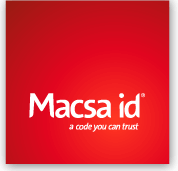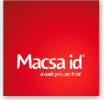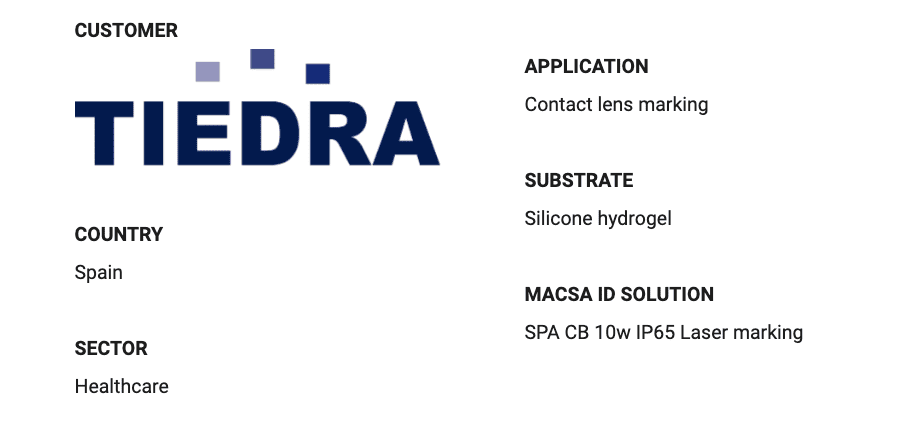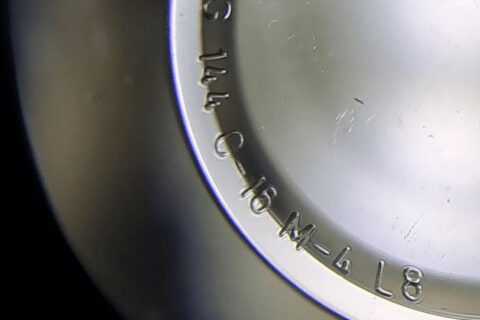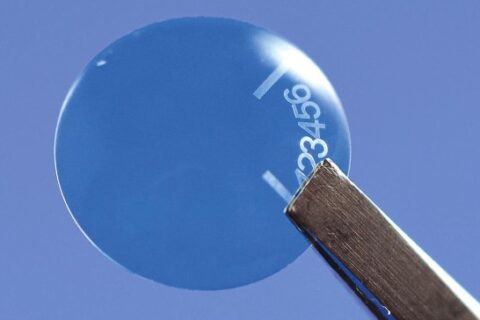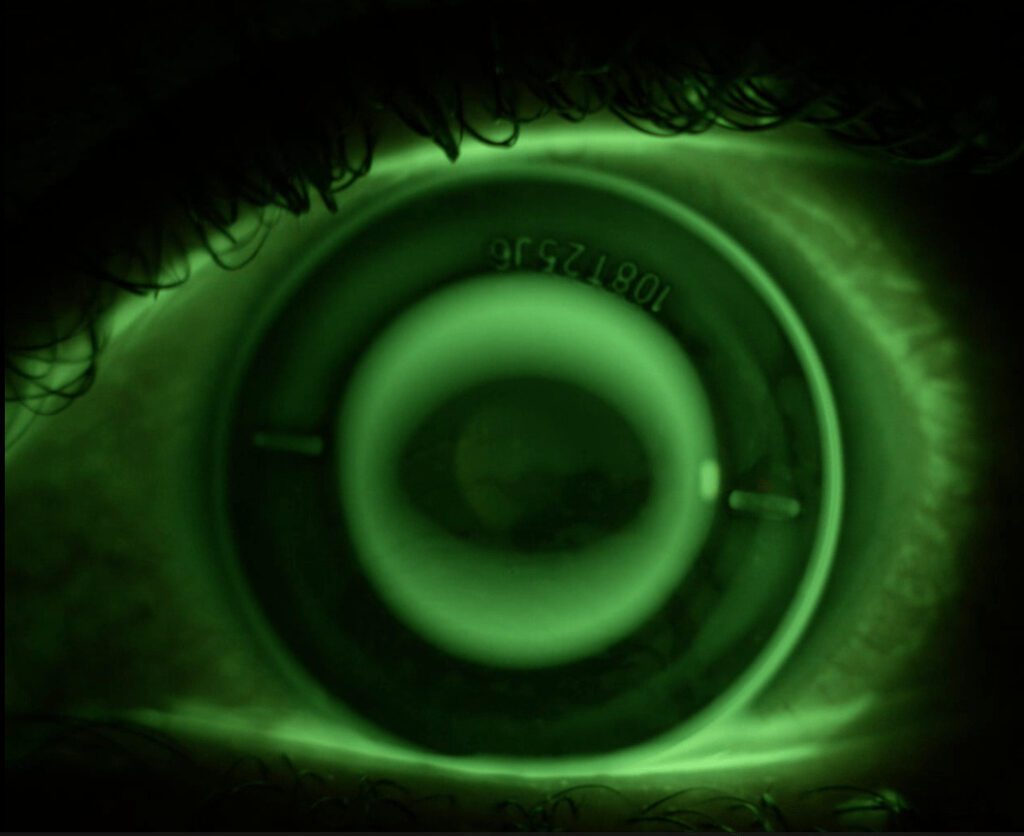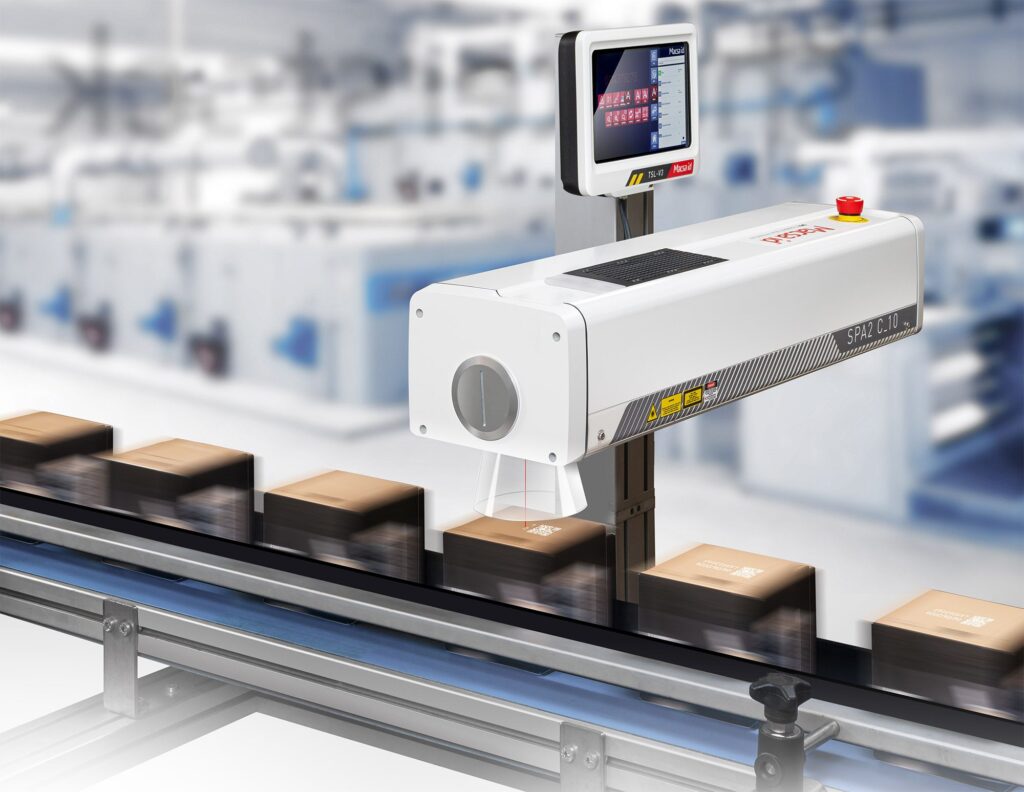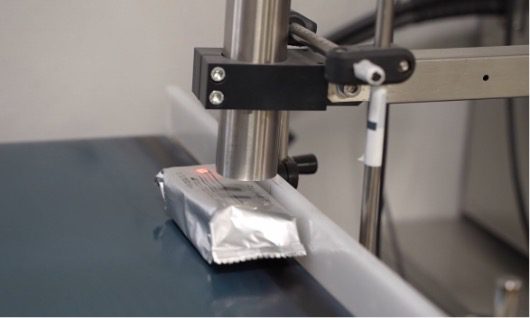Tiedra, a Macsa id success story in contact lens laser marking,
specifically in the laser marking of contact lenses.
CONTENTS
-
Introduction and history of Tiedra
-
The challenge
-
Macsa ID’s solution
-
A success video
1. Introduction and history of Tiedra
Founded in 2003 by members of the Tiedra family and based in Alcorcón (province of Madrid, Spain), Tiedra Farmacéutica develops, manufactures and markets products and services that mainly fall within the field of contactology.
Its main products are contact lenses, maintenance solutions for contact lenses, healthcare and eye-care products and diagnostic instruments for use in optometry and ophthalmology clinics.
Macsa’s corporate strategy is based on product and process innovation through leverage of R&D+i activities and systematic, intensive use of information technology and telecommunications.
Hydrogel lenses with laser marking
2. The challenge: To develop a meticulously accurate curved contact-lens marking system
Tiedra entrusted Macsa ID‘s leadership and experience with the task of developing a solution to improve one of its highly-technical industrial processes: marking of its contact lenses.
Until then they were using a pantograph (a quadrangular system of articulated rods) to mark their contact lenses which, although it did the job, was a manual process that left a lot to be desired; it provided limited marking options and the resulting marks faded over time, making identification difficult for the customer.
Macsa ID’s engineering department kicked off the project by setting up a team in close collaboration with the customer to develop a bespoke solution to meet their particularly demanding requirements.
The challenge was to find a solution that would enable extremely high-precision marking that would be performed on a curved surface with a font size of less than one millimetre.
Hydrogel lens with laser marking in use
3. Macsa id’s solution
After an in-depth study of the problem Macsa ID’s engineers decided that the best solution for marking contact lenses with a serial number was to adapt the Company’s CB 10w IP65 SPA station to the technical requirements of a product as singular and delicate as contact lenses.
The pertinent testing revealed a dramatic improvement in marking quality: not only does laser marking ensure permanence, but the process is also incredibly faster than the pantograph-based system, and the identification and control results far exceeded the customer’s requirements.
Laser marking technology is capable of etching any alphanumeric text onto the contact lens surface. The marking process can be designed to leave the normal distribution of the tear film surface unaltered. The use of cutting-edge laser heads enables high-visibility engraving that can be read with the naked eye, thus making lens recognition a quick and simple task.
SPA2 C 10W, 30W and 40W CO2 lasers are widely used in packaged product applications including labels, boxes, bottles and blisters. The DUO processing technology enables high-speed, high-quality marking with variable data.
Consumption is minimised as the cooling flow is controlled in real time, enabling us to work with a flow that matches the temperature conditions at all times.
It features a 10.1-inch control touchscreen with HELP environment sensor and online instructions including Macsa Touch OS. Protective covers are also available for dusty (IP54) and wet (IP65) environments.
SPA2 C 10W Laser
A Linx 8920 high-performance inkjet printer was also installed to mark the plastic bags containing the contact lenses.
This acquisition helps save costs and time during production by enhancing efficiency. Linx 8900 series injection printers are suitable for coding in numerous markets and substrates as different as the following:
-
- Paper/cardboard
- Flexible film
- Metals such as aluminium for beverage cans or tinned goods
- Glass
- Marking directly on foodstuffs using edible inks
- PVC and a wide variety of plastics
- Wood and cork
- Ceramics and clay
- Food labels or any other label integrated into a product
It is also provided with a self-adjusting temperature function to ensure that code quality remains stable at different temperatures.
Linx 8920 high performance inkjet printer
4. A success video
Discover how Tiedra solved its contact lens marking and traceability challenges with Macsa ID units.
“We have found that Macsa is a world-class supplier, a benchmark in laser marking-related processes.”
“Macsa has an engineering department whose mission is to adapt its products and solutions to the customer’s needs.”
Álvaro García de Tiedra – Managing Director
“The quality, speed in the engraving process and, above all, identification have all improved beyond measure.”
Guillermo Hernández, Production Manager
Here at Macsa ID we would be delighted to find the marking,
coding and traceability solution that best suits your needs
